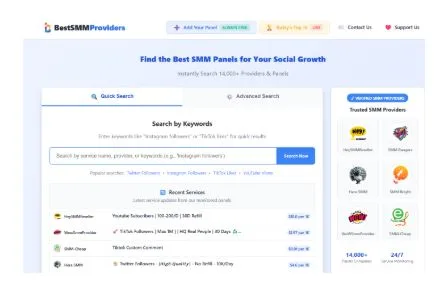Forex CFD: A Gateway to Currency Trading in Australia
Australia continues to gain prominence in global financial markets. With strong regulatory oversight, accessible technology, and growing interest from individual investors, the country offers a prime environment for exploring online trading. Among the most popular instruments is Forex CFD trading—an approach that provides both flexibility and access to the dynamic world of currency exchange.
This article will guide Australian traders through the essentials of Forex CFD trading, including how it works, how to get started, and how to manage risks effectively.
Understanding Forex CFD Trading:
The foreign exchange (forex) market is the largest and most liquid market globally, with trillions of dollars being traded daily. It enables participants to exchange one currency for another, profiting from price fluctuations.
A Contract for Difference (CFD) is a financial derivative that lets traders speculate on the future movement of asset prices without actually owning the underlying instrument. Combining the two, Forex CFD trading allows individuals to engage in global currency speculation using leveraged contracts.
Trading forex CFDs does not require physical possession of currencies, making it a highly accessible and flexible option for modern traders.
Why Forex CFD Trading Appeals to Australians:
Several key factors have driven the growth of forex CFD trading in Australia:
1. Continuous Market Availability
The forex market operates five days a week, 24 hours per day, allowing traders to engage at times that suit their schedules, including evenings and weekends.
2. Regulated Environment
Australian trading platforms must comply with financial regulations, offering a level of safety and transparency that builds investor confidence.
3. Easy Access to Global Currencies
Currency trading lets you diversify across international markets, giving Australians exposure to both major and exotic currency pairs.
4. Tools and Education
Many trading platforms in Australia provide access to powerful tools, educational content, and practice environments, making it easier for beginners to start with confidence.
How to Begin Forex CFD Trading in Australia:
Starting your trading journey involves several key steps:
Step 1: Develop a Strong Knowledge Base
Learn the fundamentals—such as how exchange rates are influenced by global events, and the mechanics of leverage, spreads, and margin requirements. A strong foundation reduces the risk of emotional decision-making.
Step 2: Select the Right Trading Platform
Choose a platform that is intuitive, responsive, and packed with useful tools. Look for features like fast trade execution, charting capabilities, risk management options, and compatibility with mobile devices. Also, consider the platform’s ability to handle multiple order types and offer layout customisation for your unique trading approach.
Step 3: Register and Verify Your Account
Account setup usually requires identity verification. You’ll be asked to provide documents such as government-issued ID and proof of address. This verification process ensures compliance with Australian financial laws and protects traders from fraudulent activity.
Step 4: Open a Demo Account First
Before funding your live trading account, use a demo account. This allows you to familiarise yourself with the platform and test strategies under real market conditions using simulated money.
Step 5: Fund Your Live Account
Once you’re ready, deposit your chosen amount and begin trading real currency pairs. It’s advisable to start with a small amount, especially if you are new to the market.
How Much Capital Do You Need to Start?
The amount needed to begin varies by platform, but many allow entry with relatively modest deposits. Starting small is a practical way to test your skills while limiting risk. As your confidence and understanding grow, you can gradually increase your trading capital.
Key Features of a Robust Forex Trading Platform:
Selecting the right platform significantly influences your trading experience. Some crucial features include:
- Live Charts and Analytics: Real-time market data and advanced indicators support effective technical analysis.
- Flexible Order Types: The platform should support market orders, stop-loss, take-profit, and limit orders for better risk control.
- Mobile Functionality: A strong mobile interface allows you to trade and monitor your positions anytime, anywhere.
- News and Market Updates: Access to an economic calendar, global news feed, and timely research can help inform your trading decisions.
These tools are not only convenient—they are essential for making well-timed and informed trades.
Trading Hours and Best Times to Trade:
In Australia, some of the best trading opportunities occur during market overlaps—especially when the Asian trading hours coincide with the start of the London session or the later New York session. These windows often offer higher liquidity and narrower spreads, improving trading efficiency.
How to Manage Trading Risk:
Risk management is one of the most vital components of successful trading. Here are some strategies to reduce potential losses:
- Set Stop-Loss and Take-Profit Levels: Predetermine how much you’re willing to lose or gain on a trade. This reduces emotional decision-making and helps you stick to your plan.
- Limit Leverage: High leverage increases potential returns but also magnifies risk. Use it cautiously.
- Diversify Your Currency Pairs: Don’t concentrate all your capital on one currency pair. Spread your investments across different markets to help manage risk more effectively.
- Create a Trading Plan: A well-structured plan can keep you focused and help you resist reacting impulsively to market noise.
- Keep a Trading Journal: Documenting your trades enables you to reflect on past decisions, identify patterns, and refine your strategy over time
Psychological Discipline in Trading:
Success in trading isn’t purely technical. Your mindset plays a huge role. Emotions like fear, greed, and impatience can sabotage even the best strategy. Stick to your plan, remain consistent, and never let temporary market movements lead to rushed decisions.
Conclusion:
Forex CFD trading in Australia offers a practical and potentially rewarding entry point into the global financial markets. With proper knowledge, the right platform, and sound risk management, traders can leverage the flexibility and liquidity of the forex market to their advantage.
Remember, success in trading doesn’t happen overnight. Patience, discipline, and continuous learning are essential to building a long-term trading career.
Frequently Asked Questions (FAQs):
Q1: Is forex CFD trading legal in Australia?
Yes, forex and CFD trading are fully legal and regulated in Australia, providing safety and structure for traders through government oversight.
Q2: How much money do I need to start trading?
You can begin with a small deposit. However, the amount should be enough to manage your trades properly and allow room for price movements. Starting small is advisable for beginners.
Q3: Can I trade on my phone?
Yes. Most platforms offer mobile trading apps with full access to markets, charts, and account features, making trading convenient on the go.
Q4: When is the best time to trade forex in Australia?
The most active times occur during the overlap of major markets—particularly when London and New York sessions align with the tail end of the Asian session. These periods offer high liquidity and lower spreads.
Q5: How do I manage my trading risk effectively?
Use stop-loss and take-profit orders, diversify your currency exposure, start with manageable leverage, and always have a clearly defined trading strategy. Keeping a record of your trades will also help identify what works best for you.





